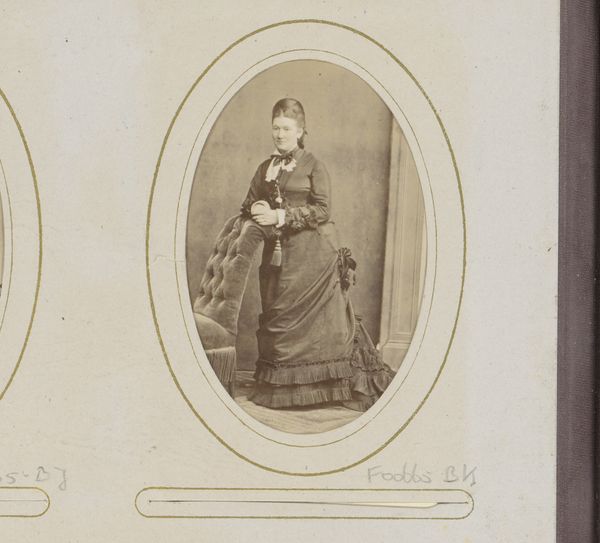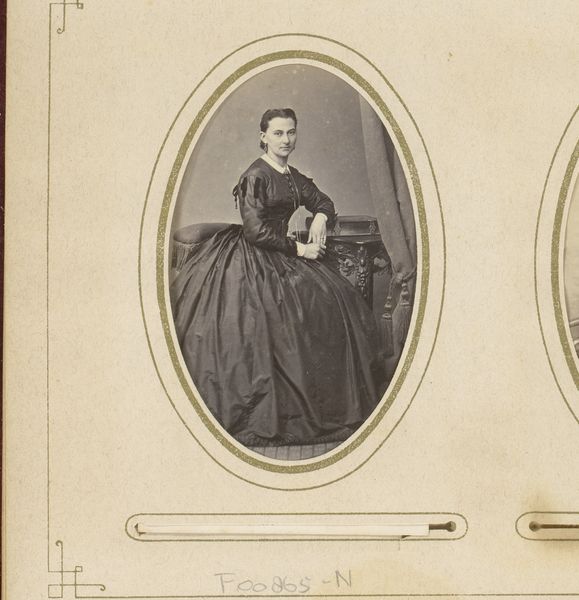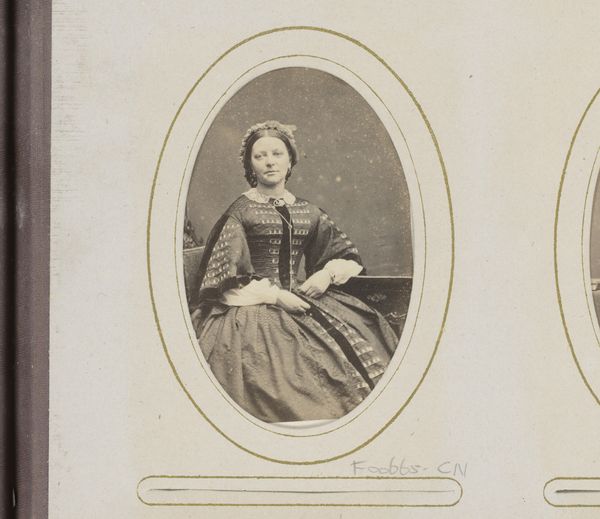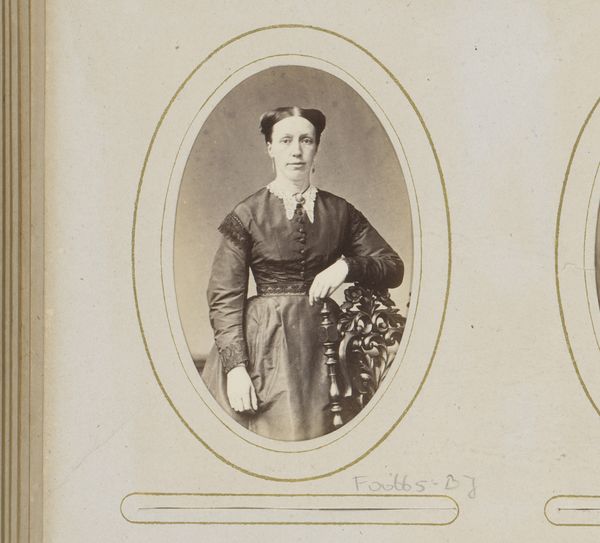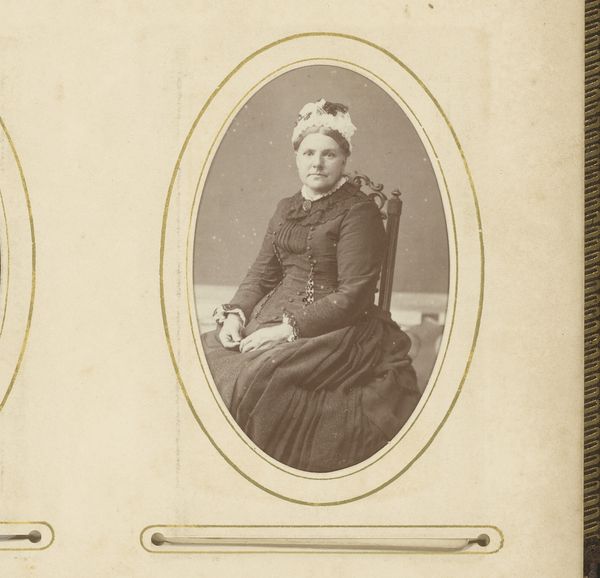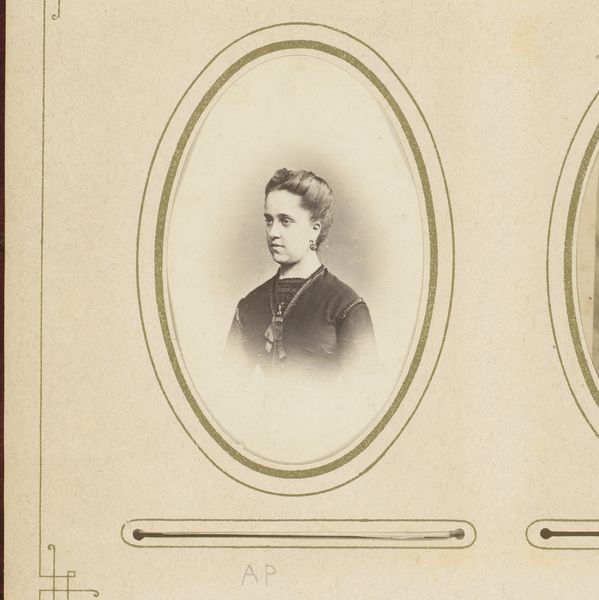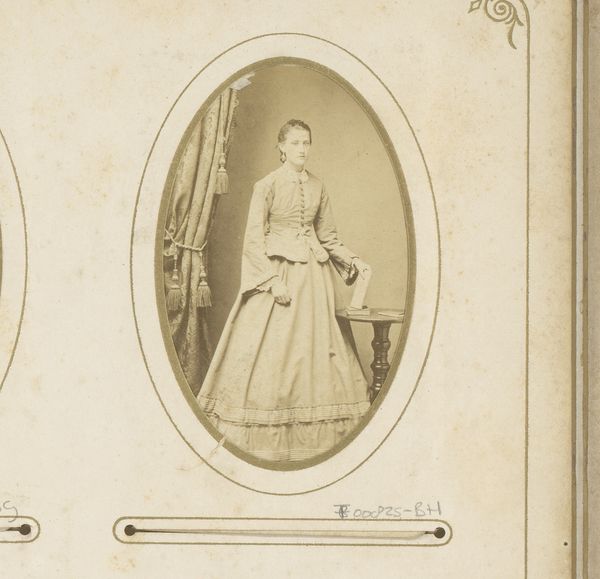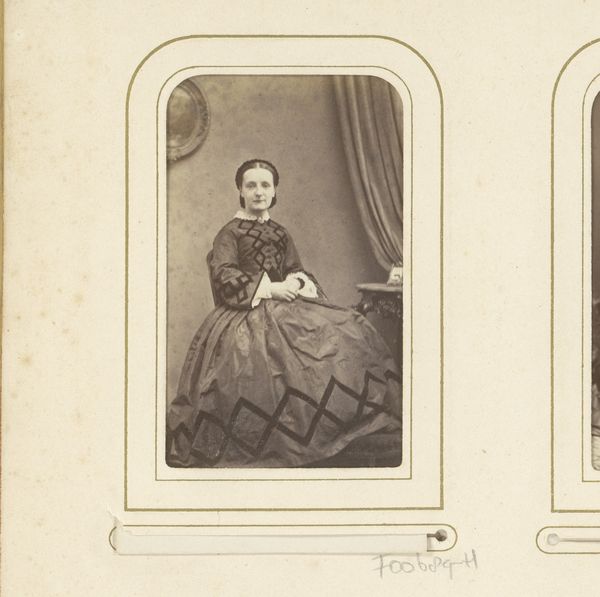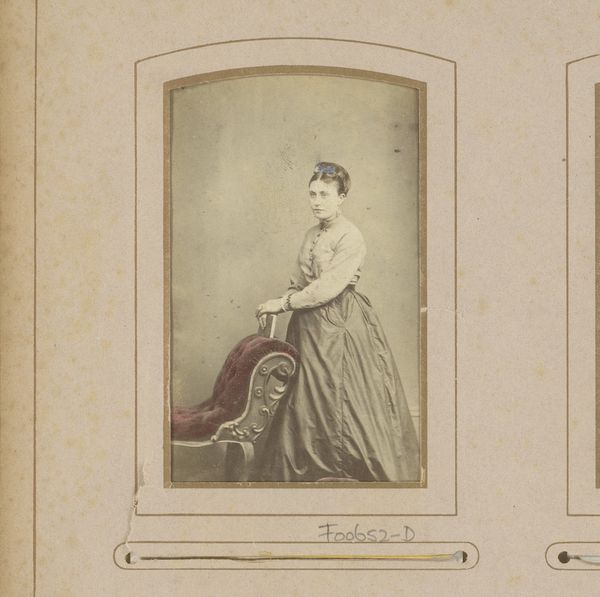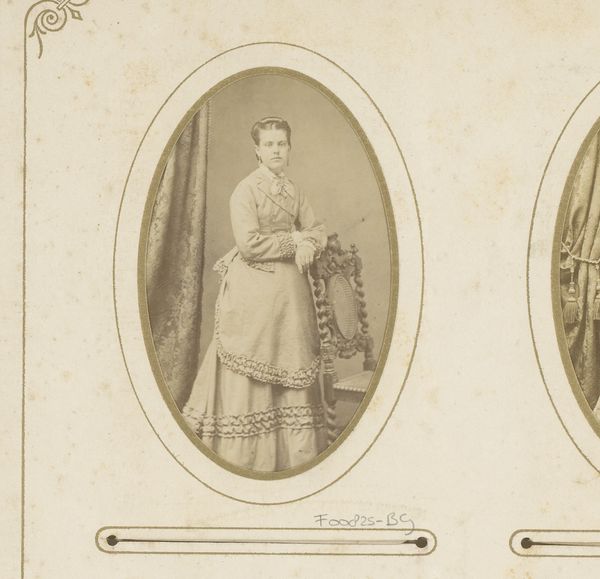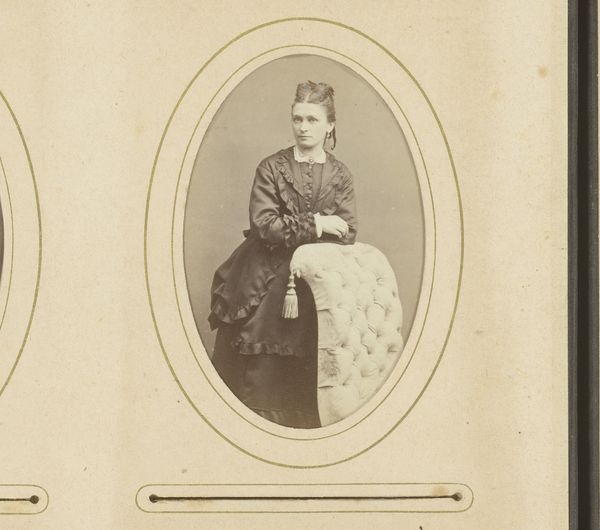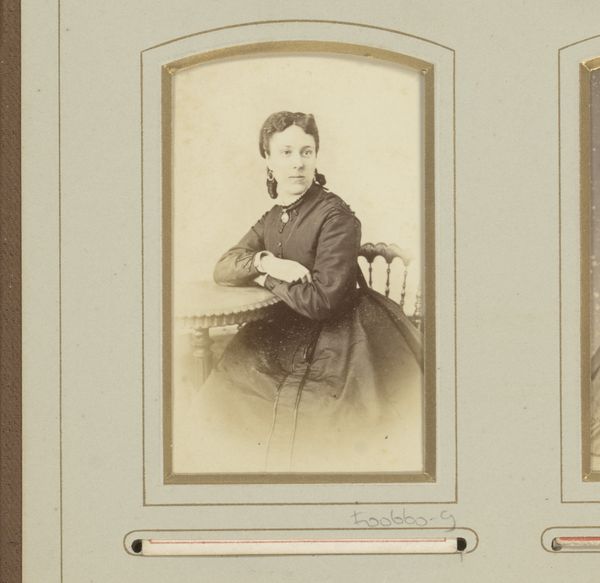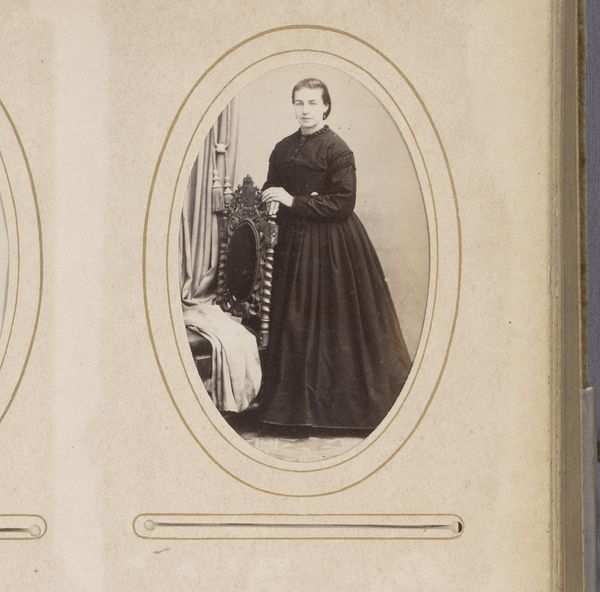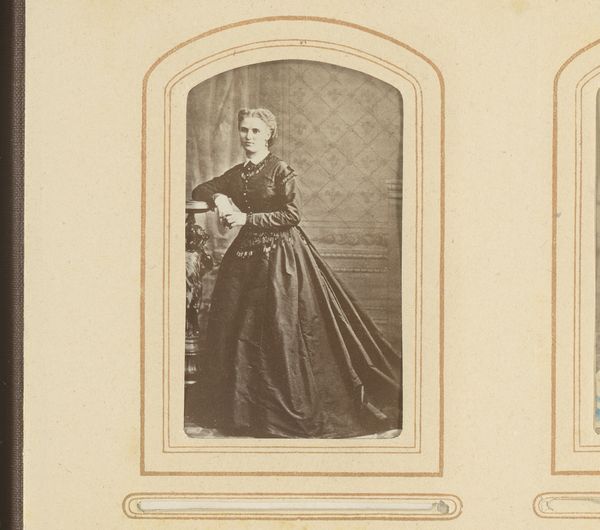
photography
#
portrait
#
photography
#
realism
Dimensions: height 82 mm, width 50 mm
Copyright: Rijks Museum: Open Domain
Curator: Here we have a portrait from the Rijksmuseum's collection, titled "Portret van een vrouw met boek," created by Wegner & Mottu sometime between 1865 and 1890. Editor: The immediate feeling is one of subdued elegance. The tonality is soft, almost muted, emphasizing the oval framing and the subject's formal pose. The way the light catches on her dress is also striking. Curator: Indeed, the composition adheres to the realistic portraiture prevalent at the time. Note how the book functions as a structural anchor, stabilizing the subject within the photographic frame. Editor: Let's consider that book. It speaks to the accessibility of literacy at this moment, and perhaps implies intellectual access available to women from this particular socioeconomic position. And look at the material of that dress! The sheer amount of fabric signifies prosperity. The image certainly underlines social standing. Curator: Semiotically, the book can also be interpreted as a symbol of knowledge and societal status. However, her expression…it reads as quite detached, almost melancholic, complicating a straightforward reading of success. The pose is more restrained and modest. Editor: Yes, I think the labor that would've gone into creating this image shouldn't be overlooked either. The material costs, and the physical effort of the studio, posing...the layers are endless, beyond this seemingly straightforward capture. Curator: Of course, there are material factors here but the arrangement, balance, and tonality of the piece achieve a sophisticated harmony, elevating the work beyond the mere recording of reality. It’s about aesthetic experience, and communicating very subtle emotional and intellectual registers. Editor: True, and yet considering how those effects were produced is also critical, and what it represented. It highlights what and whom could be photographed. In the end, I suppose it is the image's artifice that fascinates me most. Curator: It’s that tension between the visible and the invisible elements that allows us, I believe, to engage with the work on such different yet compelling levels.
Comments
No comments
Be the first to comment and join the conversation on the ultimate creative platform.
